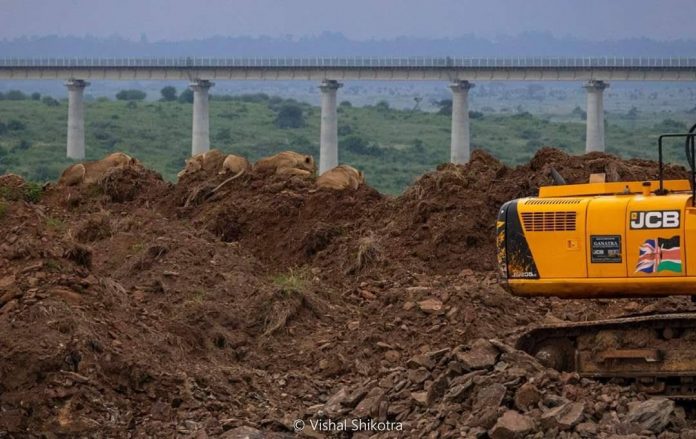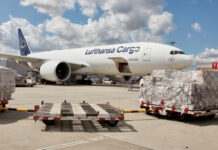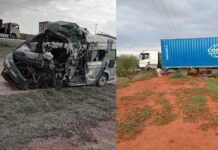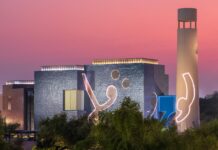
Kenya Wildlife Service has distanced itself from claims that Kenya is building a highway in the Nairobi National Park – By Gerald Gekara.
In a viral photo posted by a twitter account affiliated to Climate Change Kenya, a bulldozer is seen excavating soil, at the backdrop of Nairobi National park, with the a Viaduct seen in the distance.
The photo attracted attention from both local and international conservationists, with some launching a petition to have the project blocked.
However, the Kenya Wildlife Service confirmed that the project was to excavate murram from the park, to improve access from the KWS headquarters to a Central Workshop located within the 117 kilometer squared park.
“The correct position is that a local contractor engaged by KWS is Improving the road joining KWS Headquarters to Central Workshop inside the Park. Currently, he is scooping murram from a quarry near the Standard Gauge Railway for use on the existing murram road near the Standard Gauge Railway for use on the existing murram road.” The statement read.
KWS further argued that the project was in line with the National Environment Management Authority guidelines.
“The contractor will rehabilitate the quarry pit after completing the works on the road in accordance with an Environmental Management Plan approved and availed to him by KWS Management.”
Before the city was established, herds of animals followed the rains and moved across the plains from Mount Kilimanjaro to Mount Kenya, a migration as great as the migration that takes place on the Serengeti.
However, as the city grew the park became the northernmost limit of the animal’s migration. Migrating animals can reach their southern pastures by traveling through the part of the Athi plains called Kitengela.
This land is very important to their migration routes, but growth in the human population and the accompanying need for land threaten to cut off this traditional migration route from the park to land further south.
The park’s migratory species are also threatened by changing settlement patterns, fencing, and their closeness to Nairobi and other industrial towns. These activities fragment their ecosystems and occupy their habitat.


















